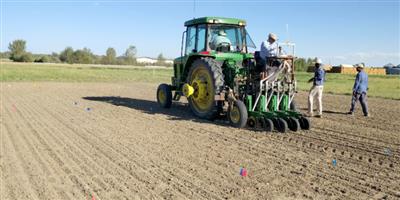Alfalfa seed has already been planted to start a three-year study in three states to develop potassium information and improve alfalfa production and quality within the central and western U.S.
Plots were seeded earlier this month at the James C. Hageman Sustainable Agriculture Research and Extension Center near Lingle, with additional studies near Fort Collins, Colo., and Manhattan, Kan., said Anowar Islam, University of Wyoming Extension forage specialist.
The field studies are part of a $250,000 USDA grant Islam received. Collaborators include forage specialist Joe Brummer of Colorado State University and forage management assistant professor Doo-Hong Min at Kansas State University.
Islam said the benefits could be extensive.
“Our potassium fertility management program will improve persistence of alfalfa stands through better nutrient management,” he said.
Scientists will focus on alfalfa growth, yield and quality by applying different levels of potassium under two cutting intervals. Potassium uptake data and forage quality of selected alfalfa cultivars (low lignin vs. conventional) at different stages will be collected.
Information will be disseminated through a planned regional alfalfa workshop with state-specific results through local extension programs and by articles and bulletins.
Islam said the information will modify outdated central and western U.S. alfalfa soil fertility guides. The group will initiate an alfalfa community of practice within eXtension, a long-term venue of communicating the latest findings on alfalfa nationally and internationally.
Contact Islam at 307-766-4151 or mislam@uwyo.edu for more information.
Source: University of Wyoming Extension
Photo: Extension forage specialist Anowar Islam atop the drill used to plant alfalfa plots at the James C. Hageman Sustainable Agriculture Research and Extension Center near Lingle. Ph.D. student Dennis Ashilenje, middle, and master's student Saugat Baskota assist. A single variety is planted through the seven tubes for each 5-foot by 20-foot plot. Photo courtesy of University of Wyoming Extension


